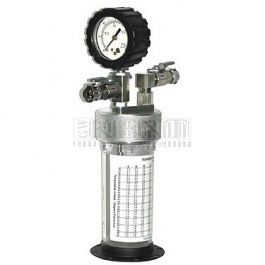Has anyone used one of these to test carbonation levels? Zahms are so expensive. I am wondering if this could be used in place of one.
Announcement
Collapse
No announcement yet.
Checking carbonation levels
Collapse
X
-
Buy a Zahm. Yeah, they're expensive, and the three-month wait for delivery is stupid. OTOH, they last forever and you can recoup almost your entire investment should you decide to sell it (note three month wait for a new one; no used currently available).
Using a question mark for carb testing is neither comparable nor repeatable.Last edited by TGTimm; 11-26-2014, 02:41 PM.Timm Turrentine
Brewerywright,
Terminal Gravity Brewing,
Enterprise. Oregon.
Comment
-
We had one for ages, but it started to drift and then not read right. It was our fault, we were not so gentle with it, then had 250 kegs out of spec and bought a Hoffmans Gehaltemeter. It is the bomb ... a very expensive bomb we are very gentle with.Head Brewer Rocks Brewing Co.
Sydney, Aust
scotty@rocksbrewing.com
Comment
-
Pressure gauges require regular calibration, and the one on the Zahm is built to be easily calibrated. I check ours every few weeks now that I have a calibration gauge. I think I'll test it again today.
We bought a Gehaltemeter--the analog one--about ten years ago. Within six months, it had been dropped, breaking the housing. I managed to glue the housing back together and get another year or so out of it (new housing: $7,000), and now it's a very expensive paper weight. The Zahm we use is over 15 years old, and still going strong. A few dents and dings, but nothing that affects its accuracy. We've broken the thermometer a few times, but they aren't incredibly expensive and take only a few minutes to replace. Keep a spare on hand.Timm Turrentine
Brewerywright,
Terminal Gravity Brewing,
Enterprise. Oregon.
Comment
-
They make a nice 3 inch thick rubber cover for the Gehalts now. I do not own one but if I did I would have it wrapped up at that price.Joel Halbleib
Partner / Zymurgist
Hive and Barrel Meadery
6302 Old La Grange Rd
Crestwood, KY
www.hiveandbarrel.com
Comment
-
Whatever you use, it will incorporate a pressure gauge. Gauges need frequent calibration/testing. When I first tested the gauge on our Zahm, it read 14 psi when the test gauge read 22 psi. Strangely, we were having severe foaming problems on our bottling line. Replacing the offending gauge--with the proper, calibratable Zahm gauge, which I calibrated, solved the foaming problem entirely.
Here's my simple and cheap calibration set-up: http://discussions.probrewer.com/sho...960#post126960
I figure total cost was < $200. Sure, it's not as accurate nor does it cover the range of units costing >$1000, but it does the job for our brewery gauges.Timm Turrentine
Brewerywright,
Terminal Gravity Brewing,
Enterprise. Oregon.
Comment
-
The choice of instrument is very much down to what level of accuracy is needed:
The basic pressure-temperature meters will give reasonably good results, but have their limitations in terms of absolute accuracy. They will give errors for CO2 when other gases are present (eg. nitrogen) in any concentration, simply because they're not built to differentiate between the pressure from CO2 and anything else. The benefits are that they're not expensive and, given reasonable care and housekeeping, are generally reliable.
Next along are digital pressure-temperature, eg. Steinfurth, which give a direct readout of CO2 content rather than having to use a slide-rule to calculate. These reduce inaccuracies from manual readings, but still don't give good data where other gases are involved. I'd include Gehaltemeters in this category - although they generate gas pressure in a different way, using electrical stimulus rather than shaking - there is still the issue of inaccuracies due to other gases. Again, they're fine overall with care and general looking-after.
The final category (eg. Orbisphere, Anton Paar) are fully electronic and the CO2 results aren't affected by nitrogen, etc. New, OE, cost is higher, but this has to be offset against their overall accuracy for measuring specifically the gas of interest. They require a certain amount of care and maintenance but - as with any analytical instrument - this is a standard theme!
So ultimately, the choice of measurement device should be driven by what your analytical needs are. Whatever instrument you choose use it properly and look after it; I can't promise it will give always you the numbers you want to see, but it will give you the numbers you need...even if that means something is out of specification on occasion!
Comment

Comment